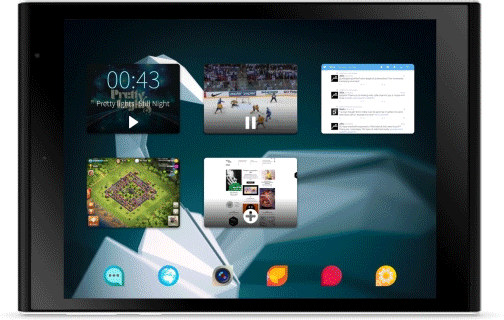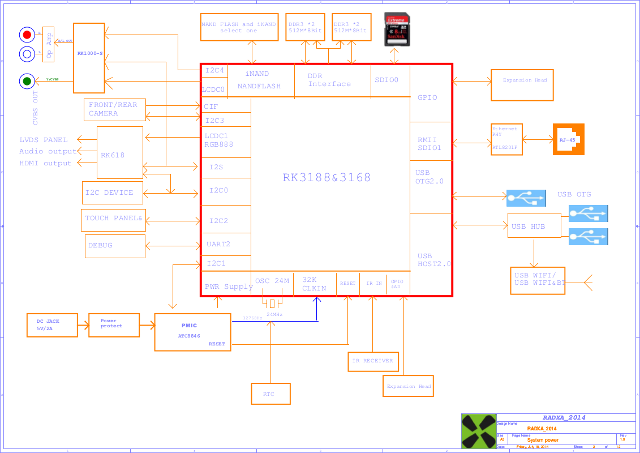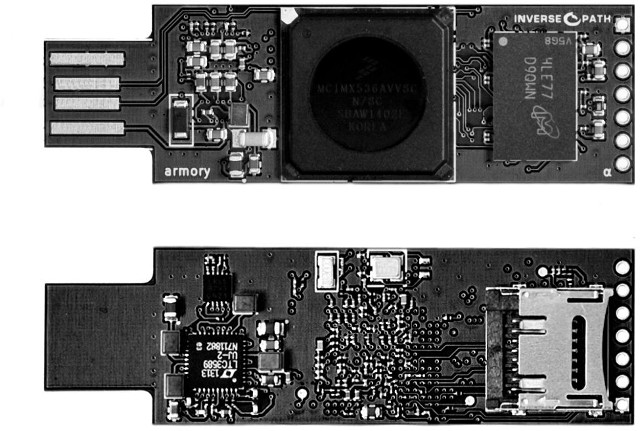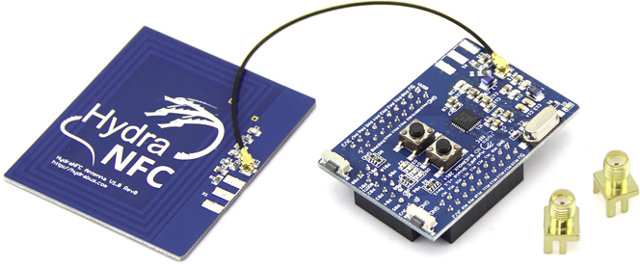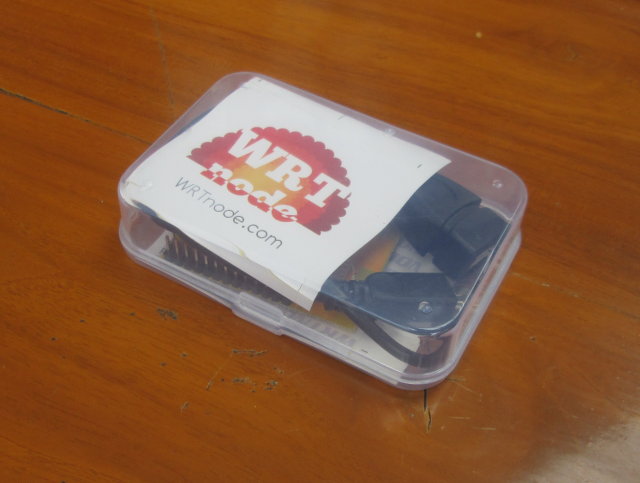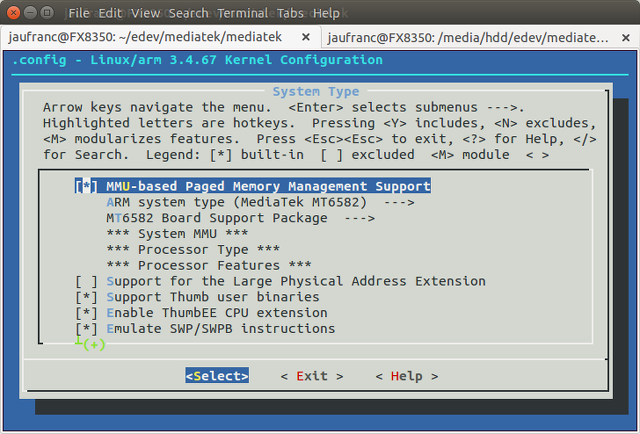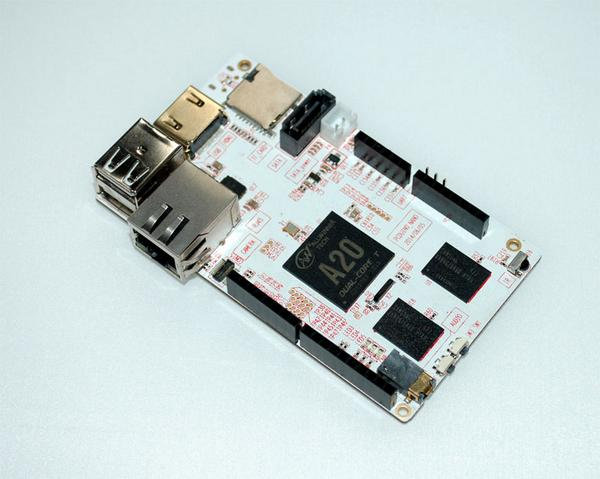After launching the Jolla phone last year, Jolla has now unveiled the Jolla Tablet running the company’s Sailfish OS, and just like Nokia N1, powered by a quad core Intel processor. Instead of directly using a pre-order system like with the Jolla smartphone, they’ve decided to launch an Indiegogo campaign, and price the tablet much more aggressively than the phone, as perks started at just $189 for early backers. Jolla tablet specifications: SoC – Unnamed Intel 64-bit quad core processor @ 1.8 GHz, which should be Z3740(D), Z3745(D) or Z3560 processor. System Memory – 2GB DDR3L-RS Storage – 32GB eMMC + micro SD slot up to 32GB Display – 7.85″ IPS display, 2048 x 1536 resolution, 5-point capacitive touch Camera – 5.0MP rear camera, 2.0MP front-facing camera Audio – 3.5mm audio jack + speaker(s)? Connectivity – Dual band 802.11 a/b/g/n Wi-Fi, GPS Sensors – Accelerometer, light sensor, and proximity sensor. […]
Radxa Rock Pro / Lite Development Boards are Now Open Source Hardware
Many projects claim to be “open source hardware” (OSHW) after they’ve released the schematics in PDF format, and source code. But the definition of OSHW has a few more requirements, which is practise means you’ve got to release schematics and PCB layout in the native format, not only in PDF, as well as the gerber files, and the bills of materials. Open Source Hardware can also truly be useful, if you can source the components. and for example, Broadcom BCM2835 processor might be impossible to procure, especially in small quantities, and that makes the Raspberry Pi unsuitable as an open source hardware platform. Existing companies / associations dedicated to OSHW include Arduino, Beagleboard.org, Olimex, etc.., and today Radxa has joined the club by releasing all hardware designs files for Rockchip RK3188 based Radxa Rock Pro and Lite development boards (2014 version) under a Creative Commons Attribution 4.0 International License. This […]
USB Armory is an Open Source Hardware Freescale i.MX53 Dongle for Security Applications
Most computers-on-a-stick come with an HDMI port, and a few USB ports, but Inverse Path’s dongle is quite different. USB Armory is a flash drive sized computer powered by Freescale i.MX53 Cortex A8 processor with only a USB port and a micro SD slot, that targets security applications such as mass storage devices with automatic encryption, virus scanning, host authentication and data self-destruct, VPN routers, electronic wallets, password managers, portable penetration testing platforms, and so on. USB Armory specifications: SoC – Freescale i.MX53 ARM Cortex-A8 @ 800Mhz with ARM TrustZone System Memory – 512MB DDR3 RAM Storage – microSD card slot USB – 1x USB host port. USB device emulation: CDC Ethernet, mass storage, HID, etc. Expansion Header – 5-pin breakout header with GPIOs and UART Misc – customizable LED, including secure mode detection Power – 5V via USB (<500 mA power consumption) Dimensions – 65 x 19 x 6 […]
HydraBus is an Open Source Hardware STM32 Devkit with Support for NFC via HydraNFC Shield
Recently, I wrote about the public availability of a MicroPython board based on STMicro STM32F4 Cortex M4 support that can easily be programmed with Python. It turns out there’s another STM32 board called HydraBus, also supporting Micro Python firmware, or another embedded firmware based on ChibiOS, together with an optional HydraNFC shield capable of sniffing, reading/writing or emulating any 13.56MHz NFC tags. HydraBus Specifications: MCU – STMicro TM32F405RG micro-controller @ 168 MHz with 1MB flash, 192KB SRAM, and an FPU. External Storage – Micro SD card slot up to 48MHz (~24MB/s) Expansion Headers – 4 headers with access to 44 I/Os (some already used by micro SD and USB 1 & 2). USB – 2x micro USB connector including 1x OTG port, and 1x device/host port, both with ESD protection. Misc – Reset and user button, user LED, Power – 5V via micro USB port. Dimensions – 60mm x […]
Mediatek Releases Android SDK with APIs for HotKnot, Video & Image Processing, Multi-SIM, etc…
Mediatek seems motivated in getting involved with maker and open source communities. Thanks to its works on Android One with Google, the company recently released the Linux kernel source for MT6582 processor, and with a separate endeavour, launched Mediatek Labs bringing LinkIt ONE platform for IoT and wearables to market, as well as a preview release of an Android SDK for its mobile processors. Features of the SDK includes: Set of libraries for MediaTek feature APIs with full API documentation. x86 MediaTek emulator based on a reference implementation of an Android 4.4.2 (KitKat) device powered by a MediaTek chip, adding capabilities to test and debug telephony and multi-SIM features, a vibrator indicator and a hot-swappable SD card. Customized version of the DDMS (Dalvik Debug Monitor Server), which adds support for testing telephony features, such as plugging and unplugging a headset, sending telephony commands to test call and SMS features, etc… […]
Getting Started with WRTnode OpenWRT Development Board
Seeed Studio sent me two nice little boards that can be used for IoT development: WRTNode and LinkIt ONE. Today, I’ll show pictures of WRTNode and accessories, and go through the “starting guide“, and will test LinkIt ONE board a few days later. WRTnode Unboxing I’ve received WRTnode by Fedex, and the board is stored in a plastic box. Inside the box, you’ll find the board, a “special” USB used to power the board and as an OTG adapter, a piece of paper with useful links (Wiki), and some WRTnode stickers. Any micro USB to USB cable can be used to power the board, but this cable is useless to connect USB devices such as flash drives, webcams (OpenCV is supported), Bluetooth dongles, and so on. You could even connect a USB hub to connect multiple USB devices as shown below. I’ve also taken a picture of both sides of […]
Mediatek Releases Linux Source Code for Android One Smartphones
Android One is a program by Google aiming at bringing low cost smartphones to the emerging markets with firmware updates to the latest Android version guaranteed for two years. Three phones part of Android One program have recently been announced for the Indian market: Micromax Canvas A1, Karbonn Sparkle V, and Spice Dream Uno, and Android One phones will be available in Indonesia, the Philippines and South Asia (Bangladesh, Nepal, Pakistan, and Sri Lanka) by the year of the year. The three phones currently available sell for $100, which based on the specs (quad core processor, 1GB RAM, 4GB flash, 4.5″ display) is not exactly an aggressive pricing compared to what is already available from Aliexpress, but the main advantage here is clearly Google support with promised firmware updates, and currently Android 4.4.4. All these phones appear to be powered by Mediatek MT6582, and company decided to release the Linux […]
$39 PcDuino3 Nano ARM Linux Development Board Features HDMI, SATA, Gigabit Ethernet, Arduino Headers…
Linksprite recently announced PcDuino3 Nano development board powered by AllWinner A20 dual core processor. PcDuino3 Nano is, as you can expect, a smaller and cheaper version the company’s PcDuino3 board without Wi-Fi module, LVDS header, and I2S interface. The board does not appear to support Li-Po batteries either, but it adds one extra USB host port compared to its big brother. pcDuino3 Nano specifications: SoC – AllWinner A20 dual core ARM Cortex A7 @ 1.0 GHz with Mali 400MP2 GPU System Memory – 1GB DRAM Storage – 4GB NAND Flash, SATA connector, and microSD card slot (up to 32GB) Video Output – HDMI 1.4 with HDCP support Audio Out – 3.5mm analog audio interface Connectivity – Gigabit Ethernet USB – 2x USB host, 1x USB OTG Expansion Headers – Arduino UNO extension interface with 14xGPIO, 2xPWM, 6xADC, 1xUART, 1xSPI, 1xI2C. Camera – MIPI camera support Misc – IR receiver Power […]


